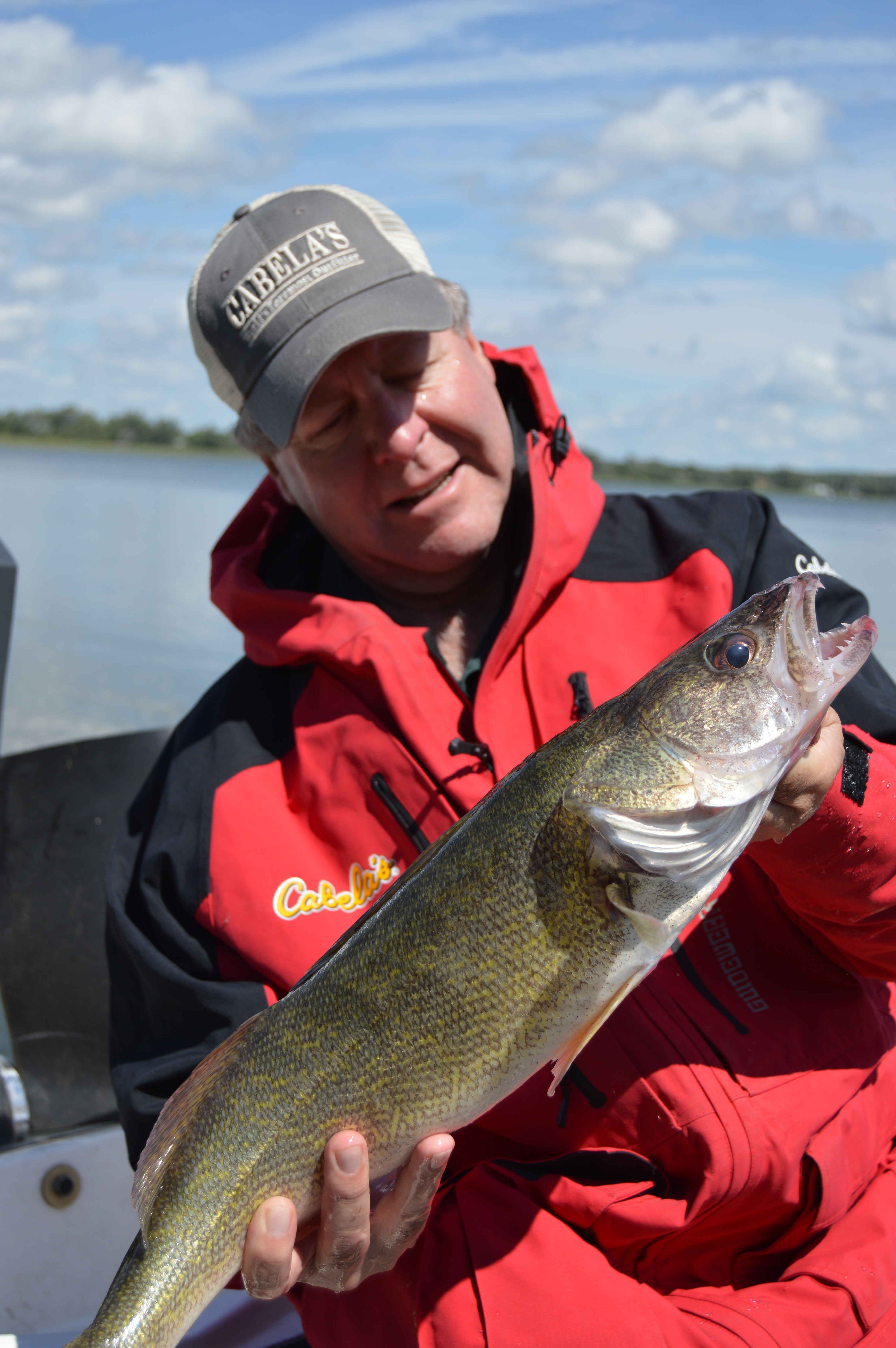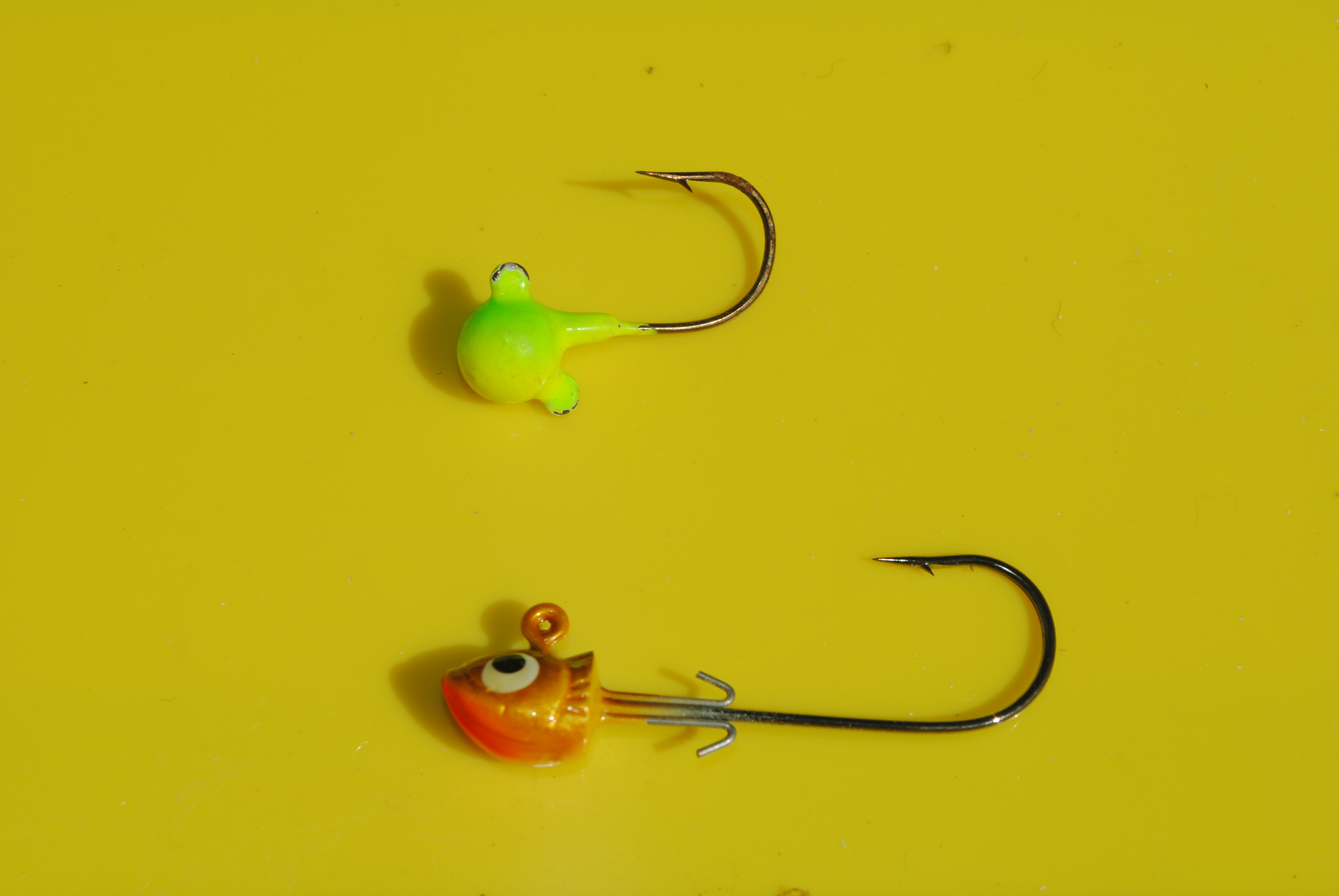by Bob Jensen

Walleye Season 2018 has arrived across the Midwest. In fact, it here’s been here for a while for some anglers. But now that the season is open for pretty much everyone in Walleye Country, it’s time to get on the water. When it comes to catching walleyes early in the fishing season, it’s tough to beat a jig. Other presentations will catch fish, but you can bet that the most successful walleye catchers if they have more than one rod rigged, at least one of those rods will have a jig tied on at this time of year. Here’s how you can catch more walleyes on jigs in the next few weeks.
There are a lot of jigs for an angler to choose from. Fire-Ball® Jigs are some of the best. They have a short-shank, wide-gap hook, and that’s really important this time of year. Early season walleyes usually prefer a smaller bait. With the Fire-Ball® Jig, you can put the hook in the minnow’s mouth and out the back of the minnow’s head. The minnow’s mouth will be right up against the head of the jig, making the presentation appear smaller, and with that wide-gap hook, your hooking percentages will go up.

Just as walleyes often prefer a smaller presentation in the spring, they also usually like the bait moved fairly slow. This is when a Stand-Up Fire-Ball® Jig comes into play. The Stand-Up version of the Fire-Ball® Jig is designed so the minnow or whatever bait is being used is much more visible when the jig is sitting still on the bottom. A round head jig lays flat on the bottom at rest, and so does whatever bait that’s on the jig. The minnow is much more visible when the jig is sitting still on a stand-up head, so the odds of the walleye seeing the bait are much better, and, if the fish can see the bait better, they are more likely to eat it.
A dragging retrieve is usually better early in the year. The water is cold, the fish don’t want to chase, so a bait that is moving slowly across the bottom with plenty of pauses will get eaten more often.
Have fathead and shiner minnows with you. Sometimes the walleyes prefer one over the other. There are also times, even early in the season, when leeches and crawlers will produce. More and more, we’re going to just a piece of crawler on our jigs. It’s a good idea to have a variety of live baits available: Figure out what the walleye want and give it to them.
As the water warms and the walleyes get more active, plastics will take the place of the live bait. When we go to plastic, we also go to a different style jig-head, one with a longer hook and a plastic-keeper. A Slurp!® Jig is a good example of a jig designed for plastics.
When it comes to plastic shapes, Impulse® Swim’N Grubs are traditional favorites just because they’re easy to use and they catch fish. Make sure the jig color contrasts with the plastic color to increase the odds of showing the fish the color that they want.
A six-pound test line is an outstanding line to use with the jig/minnow combination, and eight or ten-pound test in the same line is good with the jig/soft bait combo. If you want more sensitivity and less line visibility, try Tactical Fluorocarbon.
Right now is the time to use jigs for walleyes. If you keep the above ideas in mind, you’re going to catch more walleyes on those jigs.
PHOTO CAPTION—Two different walleye jigs: The jig on top is a Fire-Ball® Jig. Notice the shorter hook, making it better for live bait. The bottom jig is a Slurp!® Jig, an outstanding jig for plastics.
PHOTO CAPTION—This nice walleye liked the looks of Bob Jensen’s jig.
To see new and not-so-new episodes of Fishing the Midwest television, new and older fishing articles, and fishing videos, visit fishingthemidwest.com

